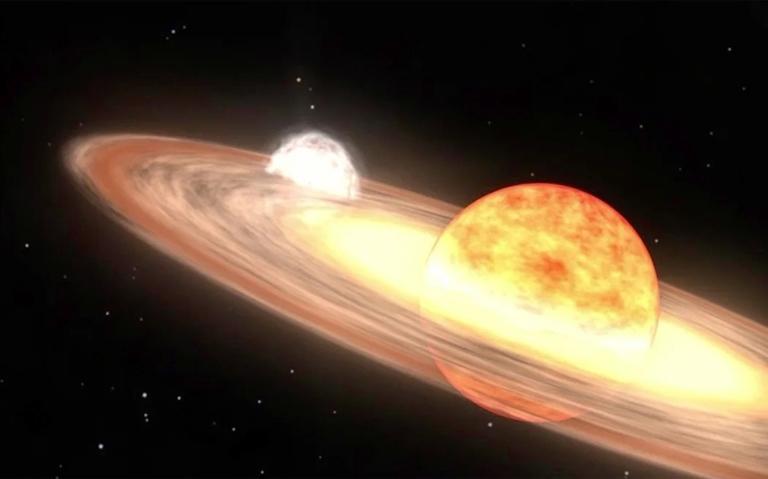
ASTRONOMERS are expecting a “new star” to appear in the night sky anytime between now and September, and it promises to be a once-in-a-lifetime celestial sight, according to NASA. The expected brightening event, known as a nova, will occur in the Milky Way’s Corona Borealis, or Northern Crown constellation, which is located between the Boötes and Hercules constellations and visible from the Northern Hemisphere. While a supernova is the explosive death of a massive star, a nova refers to the sudden, brief explosion from a collapsed star known as a white dwarf. T Coronae Borealis, otherwise known as the “Blaze Star,” is a binary system in the Corona Borealis that includes a dead white dwarf star and an aging red giant star. Red giants form when stars have exhausted their supply of hydrogen for nuclear fusion and begin to die. In about 5 billion or 6 billion years, our sun will become a red giant, puffing up and expanding as it releases layers of material and likely evaporating the solar system’s inner planets, although Earth’s fate remains unclear, according to NASA. Every 79 years or so, T Coronae Borealis experiences an explosive event. The stars in the orbiting pair are close enough to each other that they interact violently. The red giant becomes increasingly unstable over time as it heats up, casting off its outer layers that land as matter on the white dwarf star. The exchange of matter causes the atmosphere of the white dwarf to gradually heat until it experiences a “runaway thermonuclear reaction,” resulting in a nova. The star system, located 3,000 light-years from Earth and typically too dim to be seen with the naked eye, is expected to reach a level of brightness similar to that of Polaris, or the North Star. Once the nova peaks in brightness, it will be as if a new star has appeared — one that’s visible for a few days without any equipment and a little over a week with binoculars before it dims and disappears from sight for another 80 years or so. The nova will appear in a small arc between the Boötes and Hercules constellations between now and September. The NASAUniverse account on X, formerly known as Twitter, will provide updates about the outburst and its appearance. (SD-Agencies) | 
